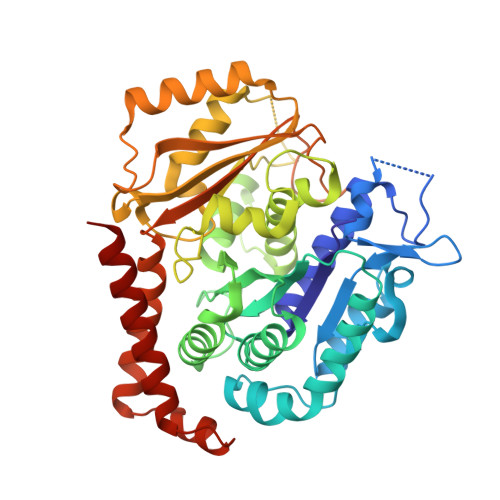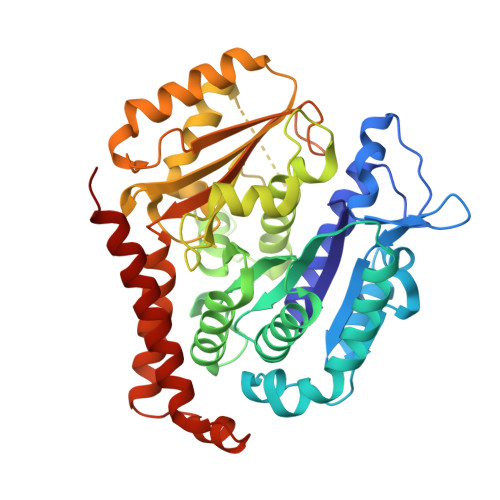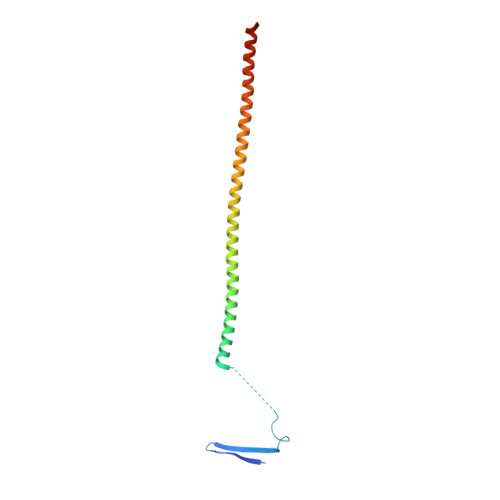Design, Synthesis, and Biological Evaluation of Pyrimidine Dihydroquinoxalinone Derivatives as Tubulin Colchicine Site-Binding Agents That Displayed Potent Anticancer Activity Both In Vitro and In Vivo.
Pochampally, S., Hartman, K.L., Wang, R., Wang, J., Yun, M.K., Parmar, K., Park, H., Meibohm, B., White, S.W., Li, W., Miller, D.D.(2023) Acs Pharmacol Transl Sci 6: 526-545
- PubMed: 37082747
- DOI: https://doi.org/10.1021/acsptsci.2c00108
- Primary Citation of Related Structures:
7TTD, 7TTE, 7TTF - PubMed Abstract:
Polymerization of tubulin dimers to form microtubules is one of the key events in cell proliferation. The inhibition of this event has long been recognized as a potential treatment option for various types of cancer. Compound 1e was previously developed by our team as a potent inhibitor of tubulin polymerization that binds to the colchicine site. To further improve the potency and therapeutic properties of compound 1e , we hypothesized based on the X-ray crystal structure that modification of the pyrimidine dihydroquinoxalinone scaffold with additional hetero-atom (N, O, and S) substituents could allow the resulting new compounds to bind more tightly to the colchicine site and display greater efficacy in cancer therapy. We therefore synthesized a series of new pyrimidine dihydroquinoxalinone derivatives, compounds 10 , 12b-c , 12e , 12h , and 12j-l , and evaluated their cytotoxicity and relative ability to inhibit proliferation, resulting in the discovery of new tubulin-polymerization inhibitors. Among these, the most potent new inhibitor was compound 12k , which exhibited high cytotoxic activity in vitro, a longer half-life than the parental compound in liver microsomes (IC 50 = 0.2 nM, t 1/2 = >300 min), and significant potency against a wide range of cancer cell lines including those from melanoma and breast, pancreatic, and prostate cancers. High-resolution X-ray crystal structures of the best compounds in this scaffold series, 12e , 12j , and 12k , confirmed their direct binding to the colchicine site of tubulin and revealed their detailed molecular interactions. Further evaluation of 12k in vivo using a highly taxane-resistant prostate cancer xenograft model, PC-3/TxR, demonstrated the strong tumor growth inhibition at the low dose of 2.5 mg/kg (i.v., twice per week). Collectively, these results strongly support further preclinical evaluations of 12k as a potential candidate for development.
Organizational Affiliation:
Department of Pharmaceutical Sciences, University of Tennessee Health Science Center, Memphis, Tennessee 38163, United States.





















